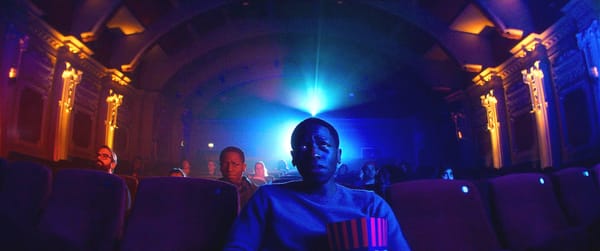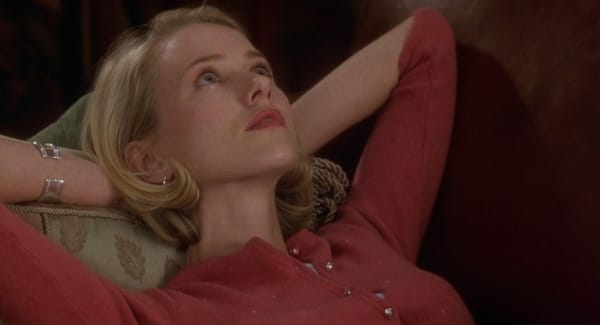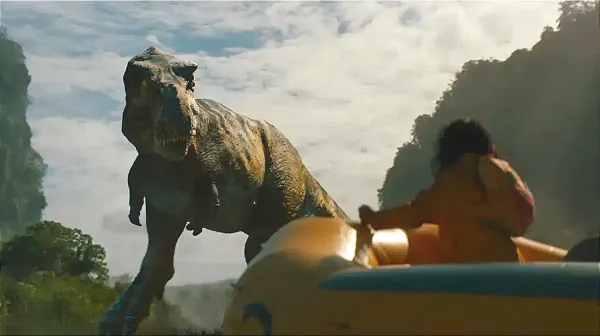Sundance Report I: The Cute Edition
"Thelma," "Between The Temples," "Love Me," "Eno," and "Sasquatch Sunset" play Park City
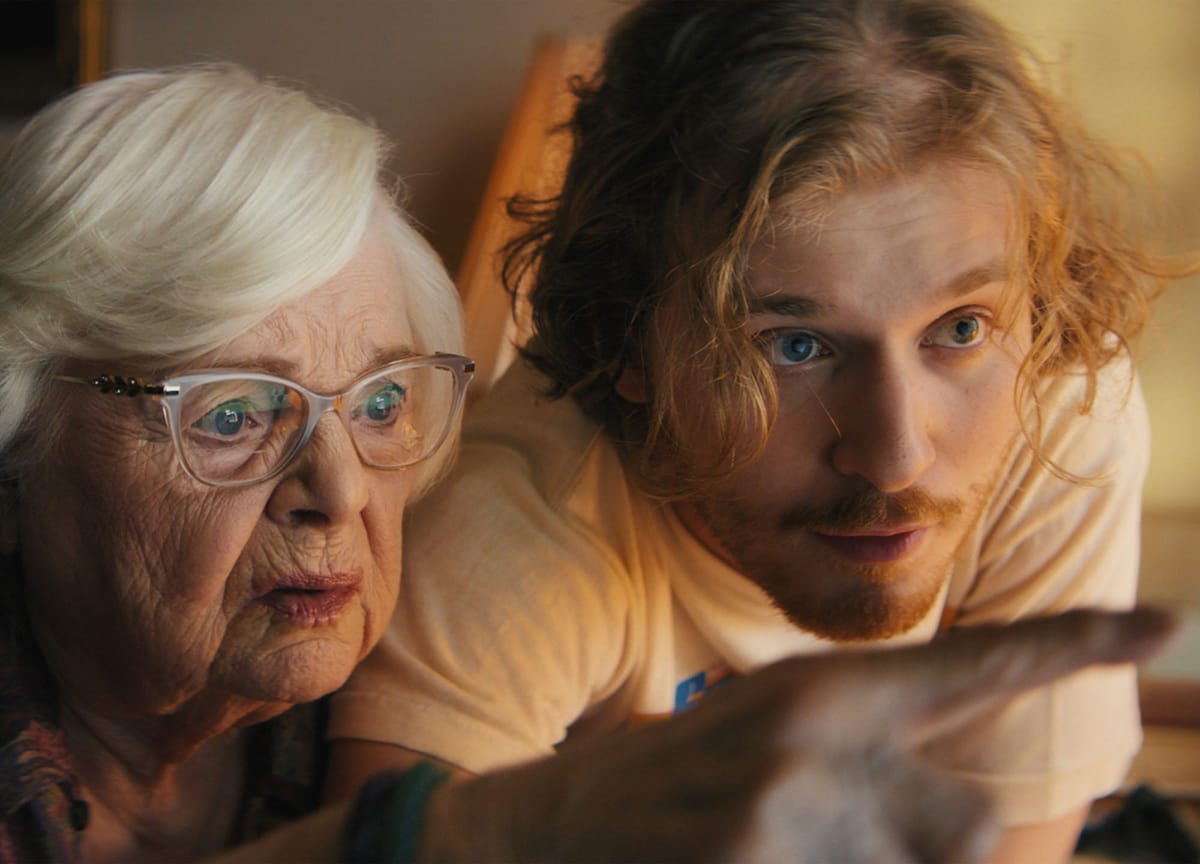
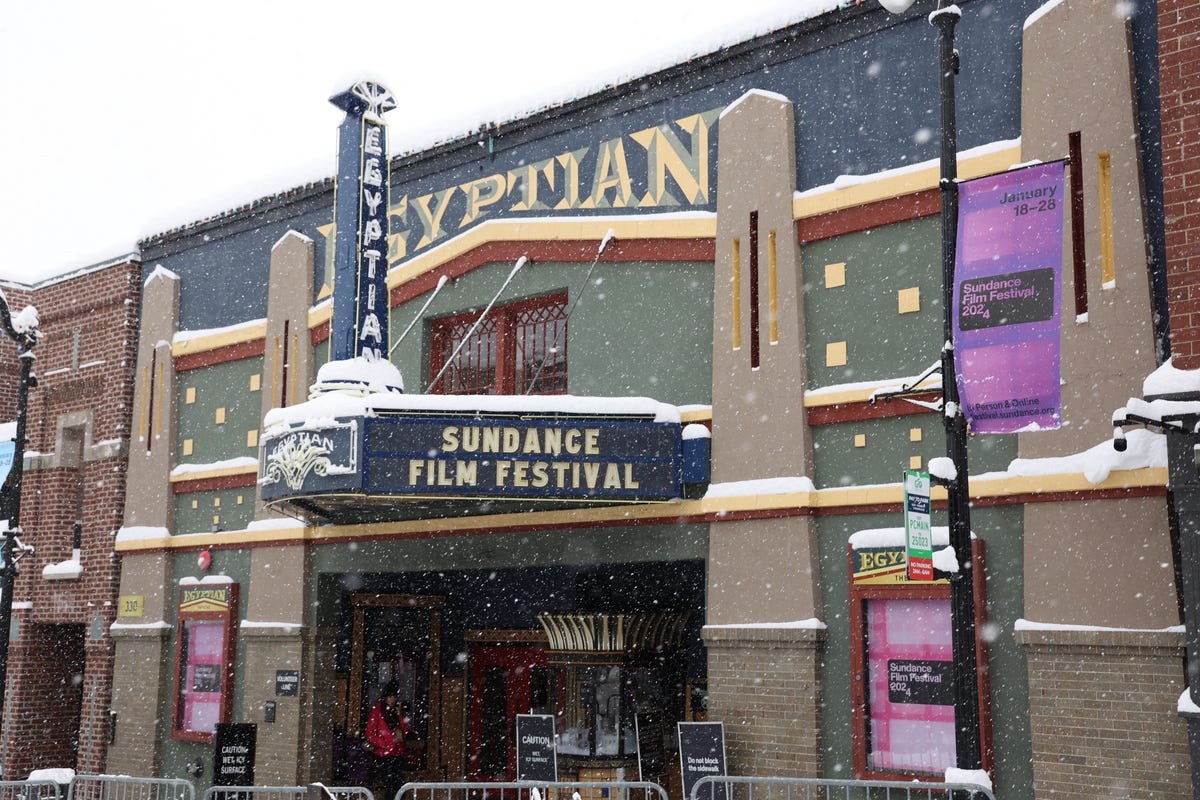
“I think this is the cute Sundance,” a fellow critic said to me as we came out of a screening Friday evening, and she may have been on to something. While one assigns themes to a festival year at one’s peril, the early days of the Sundance Film Festival v. 2024 have featured an inordinate number of movies that were less about challenging audience than tickling their fancies. Heartstrings have been plucked, sentiments stroked, and crowds pleased, which is all good news for a large and complicated event still staggering back in many ways from COVID. Sundance turns 40 this year, and a certain middle-age funk has arguably crept in. Festival arteries can and do harden; even Robert Redford stopped coming down from the mountain to start things off a few years back. But the vibe at Sundance 2024 seems to be a combination of low expectations and a high rate of return. They’re just movies, after all, but isn’t it great when they turn out good?

“Thelma” (⭐ ⭐ ⭐ 1/2) is a classic Sundance crowd pleaser, and I’d call it an early favorite to win the festival’s Audience Award; it’ll be available for online at-home screening for three days starting Thursday January 25th at the festival website. It’s a tough-granny comedy with a big, mushy heart, well-made and well-played enough to sail over the script’s many implausibilities and tonal speed bumps. And it has the delightful June Squibb, who at 94 finally lands her first lead role: A tart-tongued senior citizen who gets taken for $10,000 in a phone scam and sets out across Los Angeles in a “borrowed” mobility scooter to find the criminals and get her money back. Along for the ride is a fussy old friend played by the late Richard Roundtree in his final role before his death last October; in hot pursuit is a doting if hapless 20-something grandson (Fred Hechinger) and the grandson’s panicked parents, Thelma’s daughter (Parker Posey) and son-in-law (Clark Gregg).
If you saw Alexander Payne’s “Nebraska,” you know Squibb can play ornery as hell, but what wins you over here is Thelma’s active, ongoing engagement in the world and its mysteries. She’s the kind of tough old bird who still finds wonder in trees and electricity and other people – a running joke has her running into fellow oldsters and cheerfully comparing notes to see whether they actually know each other. The script by director Josh Margolin – he based the title character on his own grandmother, still kicking at 103 and given a lovely end-credits cameo – is wise enough to find the struggle in all his characters: The grandson despairing that he’ll never get his act together, the parents anxiously trying to micromanage generations on either side. (Posey is hugely funny as a helicopter daughter.) Even the villain of the piece, when we meet him, has his own cross to bear; I won’t spoil the identity of the actor, but the casting is perfect. And “Thelma” is attuned as well to the loneliness and existential upheavals of old age – when it’s not sending its nonagenarian heroine rolling across beds and slowly navigating stairways in emulation of her inspiration, Tom Cruise. “Thelma” is an old person’s action movie, and Squibb demonstrates there’s no mission too impossible if you have the will and a fully-charged scooter. The movie doesn’t have a distributor as yet, but expect that to change in the next few days.
The cast was present in Park City and answered audience questions after the screening. Here Hechinger and Squibb talk about the bond of friendship between their character and between themselves.
And here director Margolin eulogizes Roundtree, whose performance in the film is a final grace note to a legendary career.
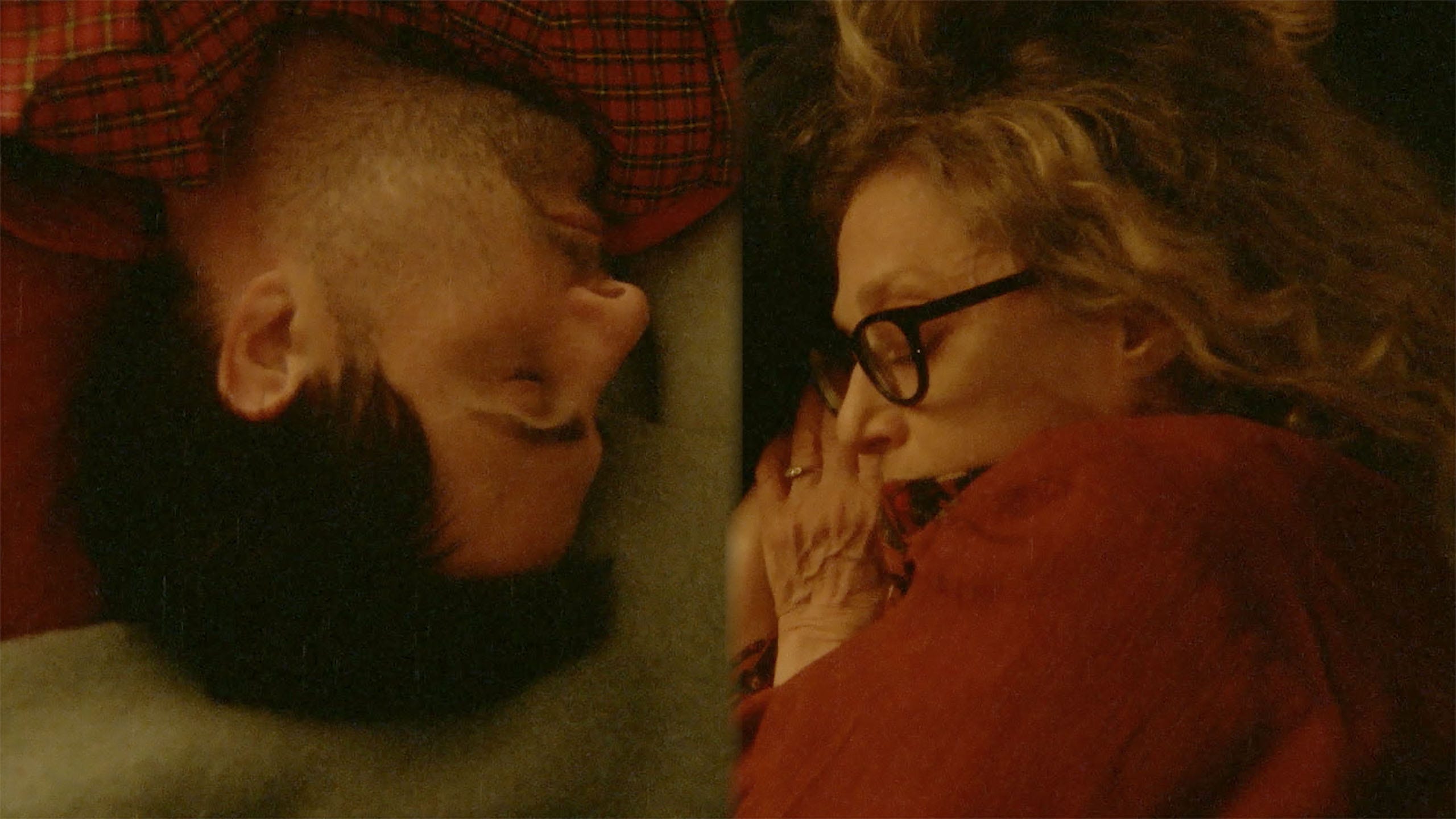
You want quirky-cute? Sundance specializes in it, and “Between the Temples” (⭐ ⭐ ⭐) provides. Nathan Silver directed this entry in the “Floundering Hero” genre, with Jason Schwartzman as a Jewish cantor who has lost his faith, his voice, and his will to live. Things start to turn around when he’s reacquainted with his elementary school music teacher (Carol Kane), a spirited flake in her 70s who wants to get bat mitzvahed. It’s the kind of movie that might be intolerably adorable if too slickly made; thankfully, Silver keeps it just weird and off-kilter enough to keep us hooked, with shambolic camerawork and editing and a general blurriness as to the central relationship. Are we watching a heartwarming story of intergenerational friendship? Or a Jewish “Harold and Maude”? Silver keeps us guessing all the way to a climactic shabbat dinner that could give the shiva in “Shiva Baby” a run for its comic embarrassment money. With Dolly de Leon (“Triangle of Sadness”) and Caroline Aaron as the hero’s two moms, writer-comedian Robert Smigel as Rabbi Bruce (he putts his golf balls into an office shofar), and Madeline Weinstein as the rabbi’s neurotic (but eligible!) daughter, “Between The Temples” plays like a lost Philip Roth novella. It’s also a love letter to Carol Kane, who makes her role something quite more than a manic pixie dream yenta.
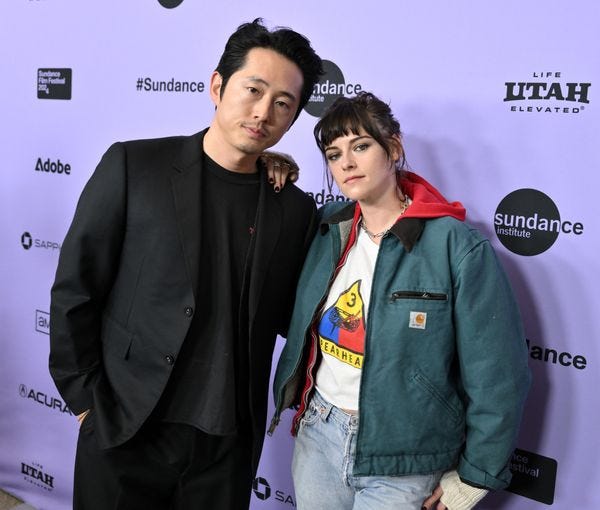
“Love Me” (⭐ ⭐ 1/2) longs to be quirky-cute – oh, how it longs. And this stridently high-concept post-apocalyptic romance between a satellite and a computerized sea buoy – two surviving intelligent systems hundreds of years after humanity has destroyed itself – certainly has the courage of its ambitions. The two characters acquire human form, after a fashion, when they tap into a video archive and virtually recreate themselves as a pair of long-dead influencers, played by Kristen Stewart and Steven Yeun (on the Park City press line, above) – or, rather, 3D digital avatar versions of the actors. There’s a rich motherlode of ideas here involving identity, authenticity, humanity, and reality, but writer-director-partners Sam and Andy Zuchero submerge them under a talky and increasingly banal relationship drama. The actors are fine; the dialogue is not – it’s as if the couple from a roadshow version of “A Marriage Story” had parachuted into a Stanley Kubrick movie. (Available online)

Even the documentaries are cute this year: “Eno” (⭐ ⭐ ⭐) Gary Hustwit’s puzzle-piece portrait of Brian Eno, a.k.a. rock music’s giant throbbing brain, has the luck to have as its subject an exceptionally charming genius. The movie for the most part avoids talking-head interviews (you should pardon the expression) and avails itself of Eno’s endless library of archival material, but there are lots of modern-day sequences of the man at home and at work, and he is great good company to be in – far-reaching in his ideas and drolly self-effacing in his commentary. The film’s gimmick is that, like Eno’s latter-day ambient work, it’s “generative” – i.e., made up of individual filmed segments that a computer program reshuffles every time “Eno” is screened. With millions of possible combinations, you’d never see the same film twice – and there’d always be some segments left out of every “mix.”
Does it work as more than a gimmick or, to be kinder, an artistic conceit? Honestly, I’d have to say no: The version that screened Thursday at Sundance did have a presumably coincidental timeline and an emotional arc – as a longtime Eno fan, I enjoyed it. But as a longtime Eno fan I was also aware of what didn’t make this cut: His creation of ambient music, some of his many collaborations, projects like the Clock of the Long Now. Highlights include rare footage of Eno in the recording studio working on “Heroes” with David Bowie, sparring tensely with John Cale for the “Wrong Way Up” album, and playing the finished version of “In the Name of Love” for a dazzled young U2. I would hate for any moviegoer to miss any of those moments, but you pays your money and you takes your chances. Appropriately, Eno himself Zoomed into the post-film Q&A, projected onto the screen like a fusion of both the Great and Powerful Oz and the man behind the curtain. Here’s what he had to say about the way the documentary’s novel structure mimics the human construction of memory.
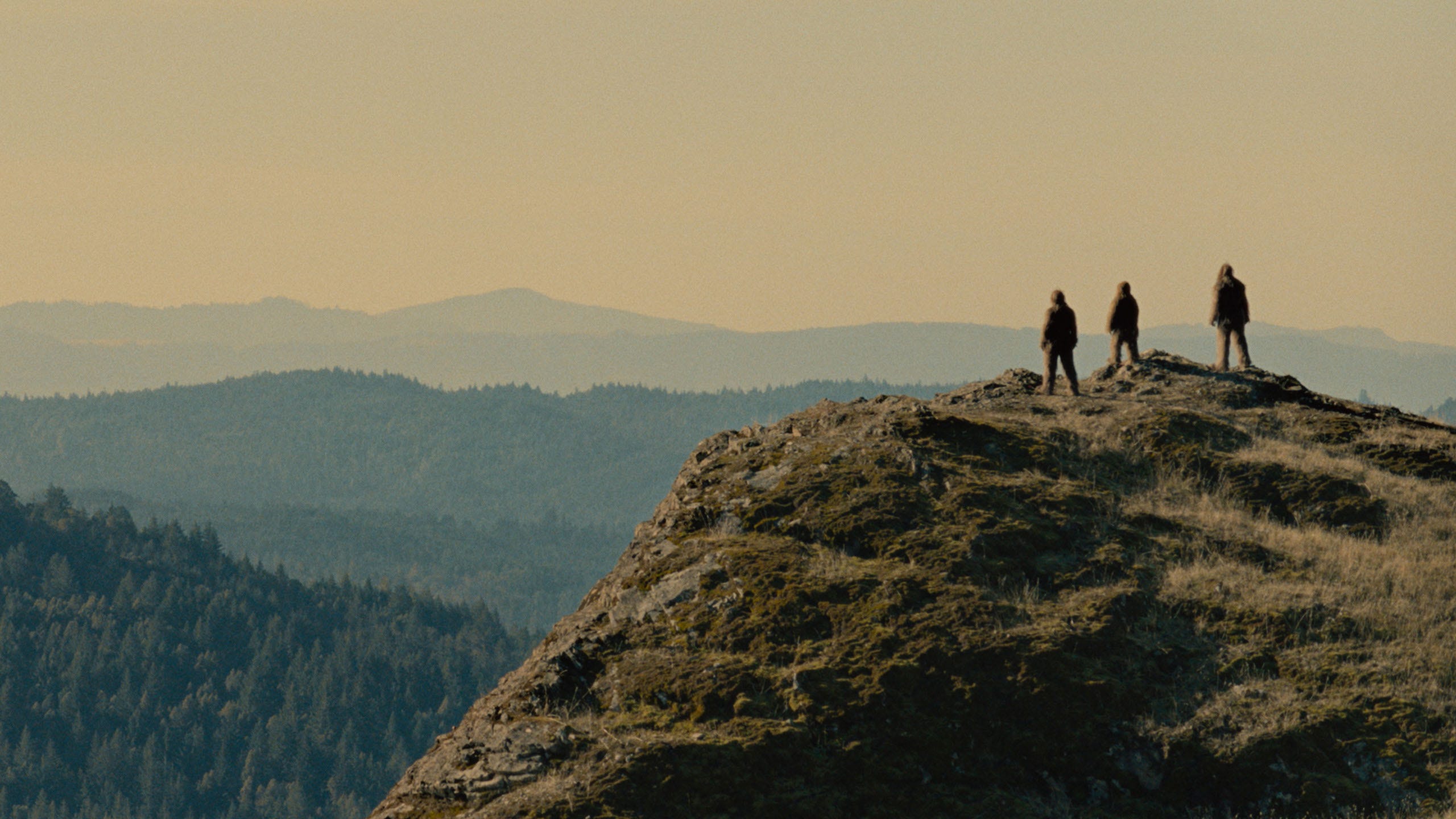
The festival programmer who introduced the Friday night premiere of “Sasquatch Sunset” (⭐ ⭐ ⭐ 1/2) by calling it “ridiculous and profoundly beautiful” was close to the mark. The latest dispatch from the strange mind-field inhabited by filmmaking brothers Nathan and David Zellner, “Sasquatch” follows a family of four nomadic Bigfoots/Bigfeet as they travel across a Pacific Northwest slowly closing in on them. Underneath costume designer Steve Newburn’s astonishingly realistic creature suits are actors Jesse Eisenberg, Riley Keough, Christophe Zajac-Denek, and Nathan Zellner, all communicating in grunts and hoots, rude gestures and moments of tenderness. Are they the last of their kind? As they send out tree-drumming signals to fellow Sasquatches that remain unanswered, a vast sense of finality descends on the film. The Zellners have the knack of mixing scatology, melancholy, deadpan slapstick, and genuine oddness to create unique works of cinema, and this might be their finest work yet – Keough as the family matriarch is especially moving. The brothers joked before the screening that they did their research and that “Sasquatch Sunset” is 100 percent cryptozoologically accurate, but the movie really does play like a cross between a nature documentary and a very hairy Chekhov play. You might mistake it for cute at times, but it’s a lot better than that. As New York Times writer Kyle Buchanan posted on social media, the Sundance audience came ready to play.
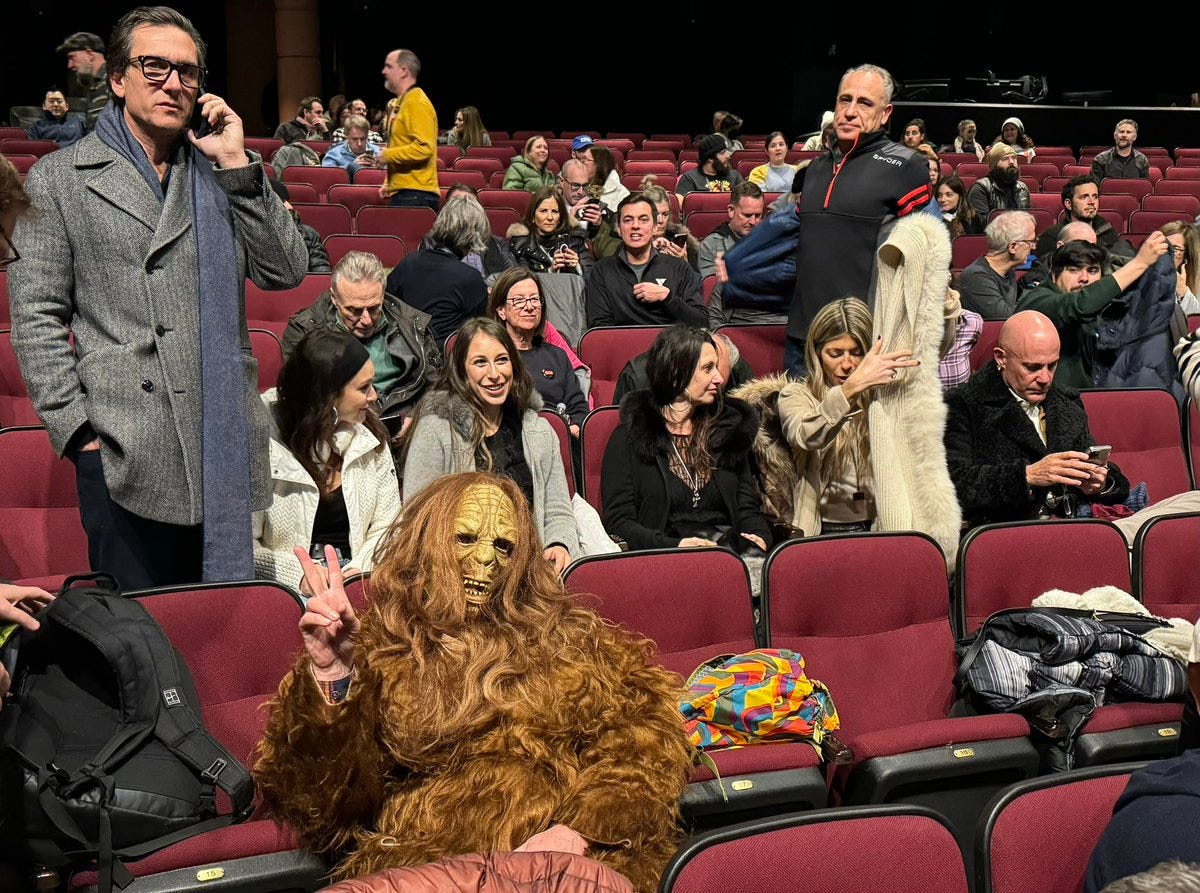
Comments? Bring them on.
If you enjoyed this edition of Ty Burr’s Watch List, feel free to pass it along to others.
If you’re not a paying subscriber and would like to sign up for additional postings and to join the discussions — or just help underwrite this enterprise, for which the author would be eternally grateful — here’s how.
You can give a paid Watch List gift subscription to your movie-mad friends —
Or refer friends to the Watch List and get credit for new subscribers. When you use the referral link below, or the “Share” button on any post, you'll:
- Get a 1 month comp for 3 referrals
- Get a 3 month comp for 5 referrals
- Get a 6 month comp for 25 referrals. Simply send the link in a text, email, or share it on social media with friends.
There’s a leaderboard where you can track your shares. To learn more, check out Substack’s FAQ.


